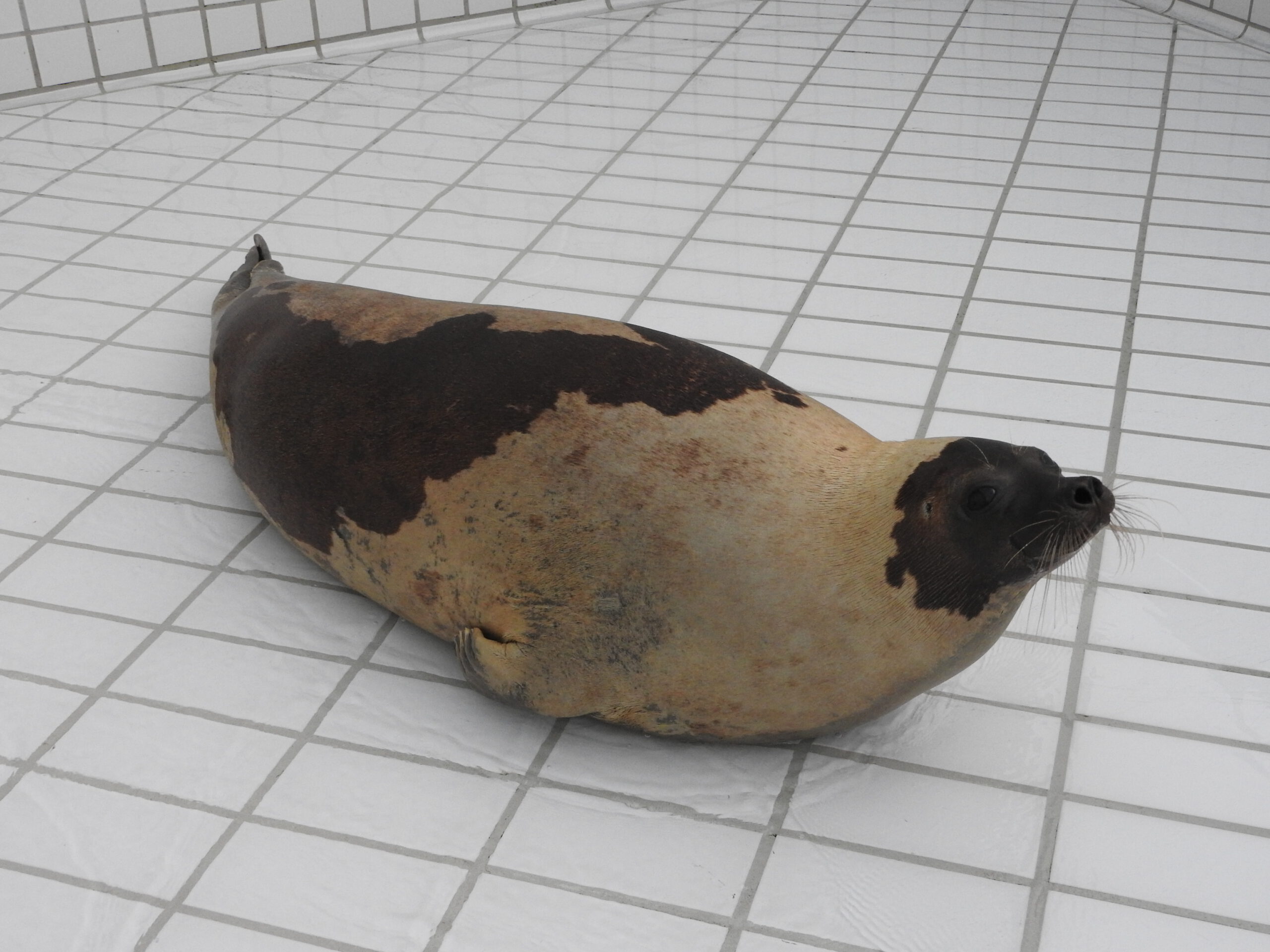A harp seal in the Netherlands
In October 2016, we took in a harp seal. A special moment, because normally these animals live around the North Pole. She was found seriously weakened near Den Oever. This is the story of Summer the harp seal, her recovery and her extraordinary release.

A lost harp seal
How could it have happened that Summer wandered off so far that she ended up in the Netherlands? Harp seals migrate to mate and to have pups. Then, they travel back to the North Pole. That went wrong with Summer. She ended up in the strange waters of the North Sea and eventually in the sticky mud of the Wadden Sea. Summer was tired and undernutritioned.
Rehabilitation in the Sealcentre
Whatever happened to her, it must have been very bad. An adult harp seal weighs around 140-150 kilos. Summer weighed 60 kilos at her intake. Given the time of year, she should have been pregnant, too. Summer wasn't. It is therefore possible that she lost too much weight during her wandering and therefore lost her pup. Or that she'd been wandering around so long she'd missed mating season.
Anyway, Summer was a long way from her home in the Arctic. The Sealcentre wanted to make her as healthy as possible during her stay in Pieterburen and then help her on her way to the North Pole. So that she could hopefully find her own harp seal population.
Tested for viruses
The first days that Summer was in Pieterburen, she was kept in quarantine. Seals from the Arctic can carry the Phocine distemper virus (PDV), or another name for it: the seal disease virus. There have recently been two outbreaks of this in the North Sea: in 1988 and in 2002. Half of the common seal population has died.
In the Sealcentre, we take care of two types of seals: the common and the grey seals. They should not come into contact with this virus. That's why Summer was investigated first. Once it turned out that she was not carrying any dangerous viruses, she could be moved to a larger bath.
Did you know...
It is normal for a harp seal to have stones in its stomach?
Stones in the stomach
Summer was x-rayed during her stay. Then we could see that she had stones in her stomach. This is normal for a harp seal. The stones have two reasons:
- the weight helps a harp seal with (fast) diving
- it kills parasites because the stones rub against each other.
Lots of rest and distance
Harp seals do not belong in the Netherlands. We call these kinds of animals exotics or vagrants. In addition, they are very sensitive to stress. It took a while before Summer started eating really well. That's why she didn't grow that fast in the beginning.
Visitors could only see her from a plateau, at a good distance. After Summer started to get used to it and could relax better, the feeding also got better. After three months, Summer was ready to be released again. Fortunately, we had a little help with that.
Adoption and going back home
Summer is named after the Summerlabb sustainability initiative. This was an initiative of Jan Douwe Kroeske. This has enabled the Sealcentre to collaborate with Gasunie and NAM. In this unique 'Summer expedition', the harp seal was helped on its way home by the new boat of the Ameland company Veltman, 'de Runner'. This boat is normally used in NAM offshore operations.
She was brought to the cold Gulf Stream. By releasing her here, she was able to find her way home very quickly. You can compare this current with a kind of highway towards the North Pole.
Watch this video
The release went very quickly. As soon as the box opened, Summer dove into the water. She swam away from the boat and showed herself briefly a little further on. Watch the video of this special moment below.